Frailty and risks of all-cause and cause-specific death in community-dwelling adults: a systematic review and meta-analysis
- PMID: 36056319
- PMCID: PMC9437382
- DOI: 10.1186/s12877-022-03404-w
Frailty and risks of all-cause and cause-specific death in community-dwelling adults: a systematic review and meta-analysis
Abstract
Background: The associations of frailty with all-cause and cause-specific mortality remain unclear. Therefore, we performed this meta-analysis to fill this gap.
Methods: We searched the PubMed and Embase databases through June 2022. Prospective cohort studies or clinical trials examining frailty were evaluated, and the multiple adjusted risk estimates of all-cause and cause-specific mortality, such as death from cardiovascular disease (CVD), cancer, respiratory illness, dementia, infection, and coronavirus disease 2019 (COVID-19), were included. A random effects model was used to calculate the summary hazard ratio (HR).
Results: Fifty-eight studies were included for the qualitative systematic review, of which fifty-six studies were eligible for the quantitative meta-analysis, and the studies included a total of 1,852,951 individuals and more than 145,276 deaths. Compared with healthy adults, frail adults had a significantly higher risk of mortality from all causes (HR 2.40; 95% CI 2.17-2.65), CVD (HR 2.64; 95% CI 2.20-3.17), respiratory illness (HR 4.91; 95% CI 2.97-8.12), and cancer (HR 1.97; 95% CI 1.50-2.57). Similar results were found for the association between prefrail adults and mortality risk. In addition, based on the studies that have reported the HRs of the mortality risk per 0.1 and per 0.01 increase in the frailty index, we obtained consistent results.
Conclusions: The present study demonstrated that frailty was not only significantly related to an increased risk of all-cause mortality but was also a strong predictor of cause-specific mortality from CVD, cancer, and respiratory illness in community-dwelling adults. More studies are warranted to clarify the relationship between frailty and cause-specific mortality from dementia, infection, and COVID-19.
Trial registration: PROSPERO (CRD42021276021).
Keywords: All-cause mortality; Cardiovascular disease; Cause-specific mortality; Frailty; Respiratory illness; cancer; meta-analysis.
© 2022. The Author(s).
Conflict of interest statement
The authors declare no conflict of interest with this manuscript.
Figures
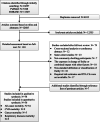
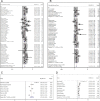
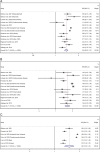
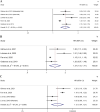
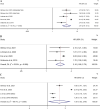
References
Publication types
MeSH terms
LinkOut - more resources
Full Text Sources
Medical
Miscellaneous

